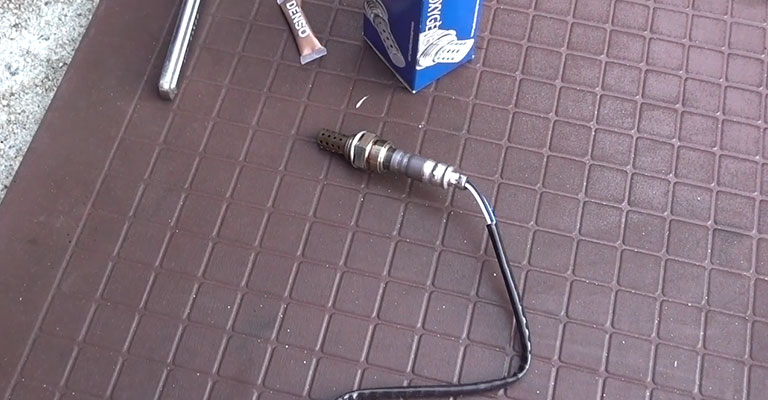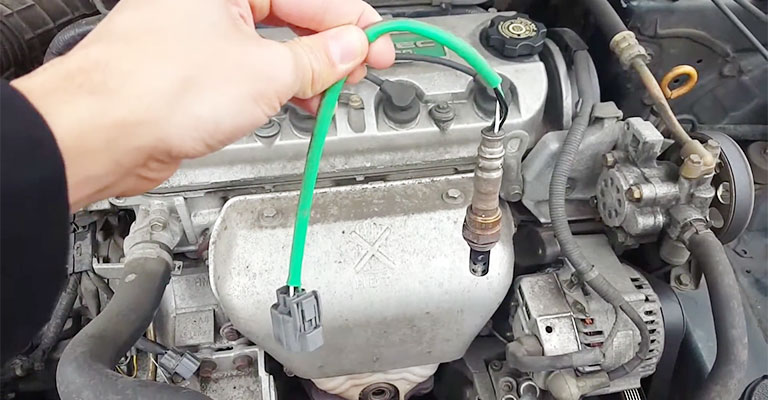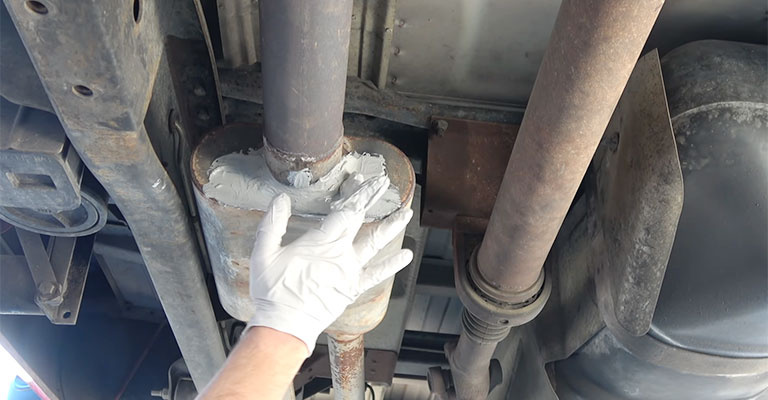The check engine light is one of the most dreaded lights on a car. You can’t drive your car if the light is on, and you can’t afford to ignore it either. When the light comes on, it’s time to find out what’s wrong with your vehicle before it becomes more severe and expensive to fix.
The code P1166 means that the Air/Fuel Ratio Sensor 1 Heater system has an electrical problem. This could be due to a shortage in the wiring or a problem with the sensor itself. If the heater circuit malfunctions, the sensor will not measure an accurate air/fuel ratio.

P1166 Honda Code Definition: Air/Fuel Ratio Sensor 1 Heater Circuit Malfunction
This error code indicates that the Air/Fuel (A/F) ratio sensor detected an incorrect voltage value during the power draw. Generic trouble codes, such as this one, apply to most vehicles equipped with an OBD-2 system, especially those made from 1996 to the present.
However, each make and/or model has different specifications for what constitutes a defect, how it should be repaired, and how to troubleshoot it. When the element is not activated, error code P1166 is set.
There may be a voltage set on the terminal of the PCM (powertrain control module, also called an ECM or engine control module in other vehicles). A/F sensor (sensor 1) heater draws power for a set period or less, suggesting a malfunction.
What Does Code P1166 Mean?

Several factors can affect engine performance, fuel economy, and emissions, including driver demand, temperature, and load. Therefore, to achieve the best performance, fuel economy, and emissions, the air-fuel ratio (AFR) must be balanced.
During normal operation, the engine control module (ECM) uses a feedback control loop to monitor fuel consumption. The stoichiometric ratio for gasoline combustion is 14.7:1, which shouldn’t leave any oxygen in the exhaust gases.
Due to the real world’s imperfections, the ECM uses oxygen or air fuel ratio sensors to determine how much oxygen is in the exhaust stream and modulate fuel trim accordingly.
What Is The Location Of The P1166 Sensor?
It is common to find AFR sensors in the exhaust manifold or before the catalytic converter. Still, their connectors can be located anywhere and are only buried a little deep. Under the hood, fuse and relay boxes are usually convenient locations to find fuses and relays.
Possible Causes Of Honda P1166 Code

The O2 sensor has an electric heater to help the sensor read more accurately after engine startup. A heater circuit problem could be the reason for this code; perhaps the heater does not have power or is not working.
Several factors may contribute to the occurrence of this error code. Several factors can cause this problem, including:
- Sensor 1 for A/F Ratio is faulty
- Sensor 1 of the A/F Ratio is shorted or open
- A/F Ratio Sensor 1 circuit has a poor electrical connection
- Pressure in the fuel tank
- Leak in the exhaust system
- The EVAP system is faulty
Honda Code P1166 Symptoms

In this case, P1166 indicates that the heater circuit is having a problem, perhaps there is no voltage coming to the heater, or the heater is damaged in the sensor.
Connect the sensor’s blue and red pins (pins 2 and 1) to the heater circuit to diagnose the problem. Within 80 seconds of engine start, 12V must be present on the harness.
A triggered Check Engine light most often accompanies this error code. It’s pretty much that simple in most cases. However, there may be problems with the vehicle in other makes or models, such as lack of power, jerking, or stalling.
- A resistance of 10-40 ohms should be measured across the terminals of the heater circuit.
- The 15-amp fuse for the ECM/Cruise Control needs to be checked in the fuse box under the dash on the driver’s side.
- Check the 20-amp LAF Heater fuse in the passenger side dash fuse box.
How Do You Troubleshoot Code P1166?
A digital multimeter (DMM), back probes, and an electrical wiring diagram (EWD) – preferably a repair manual – will help you diagnose DTC P1166, as will the electrical wiring diagram (EWD) for your vehicle.
To prevent future corrosion, it is preferable to back-probe live circuits rather than pierce the insulation. It is important to check the heater and the circuit to determine the problem’s source.
Check The Heater

Measure the heater’s resistance after removing the AFR sensor connector. Check your measurement against the specification in the repair manual if you have one.
The average AFR heater circuit can range from 7 to 20 amps. Without exact specifications, you can consider an open circuit a fault if your DMM indicates OL or ∞Ω.
Check The Circuit
Using the negative probe as a back probe, clamp the negative probe to the ground while the engine runs and connect the AFR. In this case, the heater coils should have used all the voltage on one side of the voltage meter, while the other should have read near zero volts.
The absence of 12 V indicates that a fuse, relay, or wiring is malfunctioning in the power supply. In this case, you may have a problem with the ground circuit between the AFR sensor and the ECM, indicating a problem with the wiring between them.
How To Fix P1166 Honda Code?
The type of repair you need depends on your diagnosis. However, the following are some of the most common repairs:
- The PCM needs to be replaced
- The O2 sensor on the front needs to be replaced
- Make repairs to the wire between the PCM and the A/F sensor 1 or Secondary HO2S sensor 2
- Fix the short between the A/F sensor relay and the fuse
- This error code can also be caused by the following:
- Connectors and harnesses for electric systems
- Pumps with high pressure
- Connector for high-pressure diesel fuel
- PCM for engines
For the same reason as other error codes, if you have had any maintenance or repairs performed, you should ensure that all sensor plugs and wiring have been reconnected and fastened properly.
Repairing Code P1166: What Are The Common Mistakes?
It’s not always the heater that fails in the sensor that causes the AFR sensor code. The heater is often faulty, but it’s not the only fault. Don’t condemn the AFR sensor without checking the rest of the heater circuit.
It is not always easy to access the ECM, although it is usually easy to access the AFR sensors, fuses, and relays. You will need a DMM and EWD for circuit testing, as well as some knowledge of electrical concepts.
What Is The Cost Of Fixing Code P1166?
The sensors vary in price but fixing DTC P1166 doesn’t cost more than a new AFR sensor, between $75 and $300. The cheapest option isn’t always the best. There is a wide range of prices for fuse, relay, and wire repairs, depending on the kind of fault.
How Serious Is Code P1166?
You might not notice any difference if your car runs with this DTC. However, catalytic converters may be damaged in rare cases as a result.
When the AFR is out of spec, the car will perform poorly in fuel economy and produce higher emissions. In addition, catalytic converter burnout can result from running an engine too rich for a long enough time.
Final Words
The P1166 Honda OBD2 code refers specifically to the camshaft (camshaft) timing. An over-retarded cam timing will result in an illuminated engine light and a code set. Fuel tanks and associated hoses are tested for leaks by evaporative emissions systems.
When the computer performs the test, it pulls a vacuum and checks to see if it holds. Car manufacturers use different methods to check fuel tank pressure, but a fuel tank pressure sensor is often used.
A code usually indicates a problem with the primary O2 sensor (before the catalytic converter). Wiring or connector problems may also cause the problem, but they are less likely than damaged heater elements. The fix involves replacing the sensor.

Leave a Reply